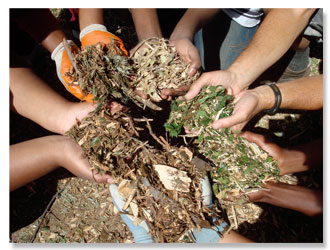- About Us
- Our Work
- Tree Info
- Get Involved
- Blog
- Volunteer
- Support Us

Canopy prioritizes tree planting, stewardship, education, and advocacy in communities where people do not have a thriving urban forest due to limited resources, competing priorities, and historical development and urbanization patterns. Viewed from space, the difference in tree cover from one neighborhood to the next is striking. Affluent neighborhoods have more trees than less affluent neighborhoods. This “green gap” is not just a matter of aesthetics; trees are a matter of public health, ecosystem health, and community well-being.
Research shows that a healthy tree canopy is associated with cleaner air, resilience to climate change, lower crime rates, reduced anxiety and depression, and improved educational outcomes for students. Conversely, a lack of trees in urban areas leads to higher asthma rates and cardiovascular disease due to air pollution and extreme temperatures in cities. Researchers have discovered that the difference in canopy tree cover is an indicator of, and even perpetuates the widening of social inequalities. This is why Canopy directs resources, such as funding, expertise, advocacy, and mobilizes volunteers, to closing the green gap.
Canopy brings people together, regardless of age, ability, and background to participate in environmental stewardship. We strive to provide meaningful access to urban nature to each community we serve. We do so by including the voices of the community in Canopy’s programmatic choices and leveraging the community’s own resources, which include strong environmental ethos, cultural landscaping practices, and historical relationships to the land.
We aim to integrate our work of equity and inclusion into all levels of our organizational structure, practice, and culture. We understand that practicing equity and inclusion is an ongoing process and have identified these indicators of our progress: